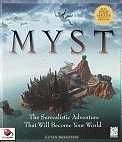- [*]Extra Reserve, which refers to a blended, 15-year-old wine.[*]Special Reserve is a wine where the youngest component in the blend will be about 10 years old, having aged in cask, without having been in the estufa tanks.[*]Reserve denotes a blended five-year-old wine, some or all of which has undergone estufagem in tank and then a proportion of which has been aged in cask.[*]Finest Madeira is a blended three-year-old wine, bottled after estufagem and aging in tank[/list]The Tinta Negra Mole is the grape variety for three-year-old Madeira, while the noble grape varieties are used for the older wines. Bulk wine experiences fast estufagem in the tank and then is aged for about 18 months before shipment, sometimes with the addition of caramel for color and sweetness. Bottled varietals of Madeira include:
- [*]Sercial (a clone of Riesling that is dry in style, with good acidity)[*]Verdelho (a soft, medium-dry wine)[*]Bual (or Boal, a medium-rich, elegant wine)[*]Malmsey (also known as Malvoisie or Malvasia is a rich wine)[*]Other varieties grown in lesser quantities are,[/list]
o Terrantez, a medium-sweet variety which can be added to the other four, although it is becoming exceedingly rareo Bastardo and Moscatel also becoming rare.
- [*]Rainwater is a light, medium-dry style of Madeira.[/list]That's enough for now. A commercial variety you will commonly find is Blandy's (in 5, 10, & 15 year ages).







